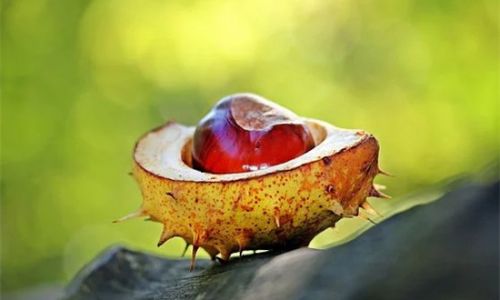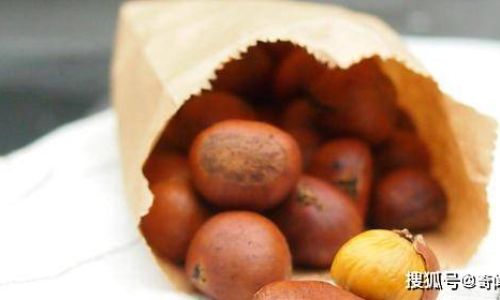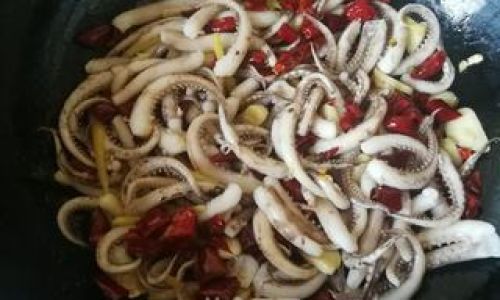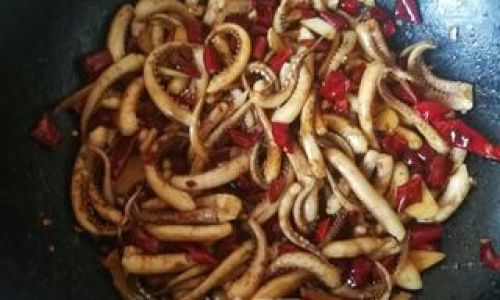Table of content
- Step 1: Select Only Pristine Chestnuts
- Step 2: Clean Without Damaging
- Step 3: Dry Thoroughly
- Step 4: Use Breathable Containers
- Step 5: Optimize Refrigerator Conditions
- Method A: Freezing Whole, Unpeeled Chestnuts
- Method B: Freezing Peeled, Cooked Chestnuts
- A. Oven Drying
- B. Air Drying (Sun or Shade)
- C. Dehydrator Drying
Chestnuts, often referred to as the “grain that grows on trees,” are a beloved culinary ingredient enjoyed across the globe. Their sweet, nutty flavor and versatile texture make them a staple in both sweet and savory dishes. However, preserving chestnuts properly can be challenging, as they are prone to spoilage, mold, and drying out if not stored correctly. This comprehensive guide will explore various methods to extend the shelf life of chestnuts, whether they are fresh from the tree, cooked, or dried. From refrigeration to freezing, drying to vacuum sealing, we’ll delve into the science behind each technique and provide actionable steps to ensure your chestnuts remain delicious and safe to eat for months—or even years—to come.
Understanding Chestnut Composition: Why Proper Storage Matters
Chestnuts are unique among nuts because they contain a high moisture content (about 50%) and a relatively low fat content. This combination makes them perishable compared to almonds or walnuts, which have longer shelf lives due to their lower water content. When harvested, chestnuts are still alive and respiring, meaning they continue to metabolize stored nutrients, release moisture, and generate heat. If not stored under optimal conditions, this natural process accelerates spoilage, leading to shriveled, moldy, or rancid nuts.
The key to preserving chestnuts lies in slowing down their metabolic activity while preventing microbial growth. This requires controlling temperature, humidity, and oxygen exposure. Below, we’ll explore seven proven methods to achieve this, along with tips for selecting, preparing, and monitoring stored chestnuts.
Short-Term Storage: Refrigeration (1–4 Weeks)
Refrigeration is ideal for preserving fresh chestnuts for up to a month. However, improper handling can lead to premature spoilage. Follow these steps for optimal results:
Step 1: Select Only Pristine Chestnuts
Before storing, inspect each chestnut. Discard any with:

- Cracks or holes in the shell (pests may have entered).
- Soft spots or mold (signs of decay).
- Unusual weight (overly light nuts may be dried out).
Step 2: Clean Without Damaging
Gently wipe the shells with a damp cloth to remove dirt. Avoid submerging them in water, as excess moisture promotes mold.
Step 3: Dry Thoroughly
Lay chestnuts in a single layer on a towel and air-dry for 1–2 hours. Residual moisture increases spoilage risk.
Step 4: Use Breathable Containers
Store chestnuts in perforated plastic bags, mesh produce bags, or open paper bags. Avoid airtight containers, which trap moisture and accelerate rot.
Step 5: Optimize Refrigerator Conditions
Place bags in the crisper drawer, where humidity is slightly higher. Maintain a temperature between 32–36°F (0–2°C). Check weekly for spoilage.
Medium-Term Storage: Freezing (3–12 Months)
Freezing halts microbial growth and enzymatic activity, preserving chestnuts for up to a year. However, blanching is crucial to prevent texture changes.
Method A: Freezing Whole, Unpeeled Chestnuts
- Blanch for 2–3 minutes in boiling water to loosen shells.
- Cool immediately in ice water to stop cooking.
- Dry thoroughly and pack into freezer-safe bags.
- Remove excess air and seal tightly.
Method B: Freezing Peeled, Cooked Chestnuts
- Roast or boil chestnuts until tender.
- Peel while warm (shells slip off easier).
- Spread on a tray and freeze for 2 hours to prevent clumping.
- Transfer to airtight containers and label with the date.
Pro Tip: Frozen chestnuts retain best quality when used within 8–10 months. Thaw in the refrigerator overnight before reheating.
Long-Term Storage: Drying (6 Months–2 Years)
Drying reduces moisture to below 10%, creating an inhospitable environment for bacteria and fungi. Choose from three methods:
A. Oven Drying
- Preheat oven to 140°F (60°C) with the door slightly ajar.
- Slice chestnuts in half (to speed drying) or leave whole.
- Arrange on a baking sheet and dry for 6–8 hours, stirring occasionally.
- Store in airtight jars in a cool, dark place.
B. Air Drying (Sun or Shade)
- Sun Drying: Ideal in arid climates. Spread chestnuts on trays and cover with cheesecloth to protect from pests. Dry for 7–10 days.
- Shade Drying: Hang chestnuts in mesh bags in a well-ventilated area for 2–3 weeks.
C. Dehydrator Drying
- Set dehydrator to 135°F (57°C).
- Slice chestnuts and dry for 8–12 hours.
- Test for dryness by snapping a nut—it should shatter, not bend.
Rehydration Tip: Soak dried chestnuts in hot water for 30 minutes before cooking.

Vacuum Sealing: A Modern Solution
Vacuum sealing removes oxygen, slowing oxidation and microbial growth. Pair this method with refrigeration or freezing for extended shelf life.
- Blanch and peel chestnuts (for raw storage) or cook and cool them first.
- Use a vacuum sealer to remove air from bags or canisters.
- Store in the freezer for up to 2 years or refrigerator for 3–6 months.
Canning: For Shelf-Stable Chestnuts
Pressure canning kills bacteria, allowing storage at room temperature. This method is ideal for cooked chestnuts.
- Peel and cook chestnuts until tender.
- Pack into sterilized jars, leaving 1-inch headspace.
- Cover with boiling syrup (1:1 sugar-water ratio) or broth.
- Process in a pressure canner at 10 PSI for 90 minutes (adjust for altitude).
Safety Note: Water-bath canning is unsafe for chestnuts due to their low acidity.
Sand Storage: A Traditional Approach
In some regions, chestnuts are buried in dry sand to maintain humidity. While labor-intensive, this method mimics natural burial conditions.
- Fill a wooden box with clean, dry sand.
- Layer chestnuts between sand, ensuring no nuts touch.
- Store in a cool cellar (40–50°F / 4–10°C).
- Check monthly for mold or rot.
Alcohol Preservation: Gourmet Flavor Infusion
For a unique twist, preserve chestnuts in alcohol. This method is popular in European confectionery.
- Peel and lightly roast chestnuts.
- Pack into sterilized jars and cover with brandy, rum, or sweet wine.
- Seal tightly and store in a dark pantry for 3–6 months.
- Use in desserts or as a luxurious garnish.
Common Mistakes to Avoid
- Storing Unwashed Chestnuts: Dirt accelerates spoilage.
- Using Airtight Containers for Raw Nuts: Trapped moisture causes mold.
- Freezing Without Blanching: Results in mushy texture.
- Ignoring Spoilage Signs: Discard any nuts with off-odors, discoloration, or powdery mold.
How to Tell If Chestnuts Have Spoiled
- Smell: Rancid or sour odors indicate spoilage.
- Texture: Shriveled, overly soft, or leaking nuts are unsafe.
- Mold: Fuzzy growth in green, white, or gray hues.
- Weight: Lightweight nuts may be dried out.
Maximizing Flavor and Nutrition Post-Storage
- Rehydrate Dried Chestnuts: Simmer in milk or broth for 20 minutes.
- Roast Frozen Chestnuts: Thaw first, then roast at 400°F (200°C) for 15 minutes.
- Blend into Purees: Perfect for soups, sauces, or baked goods.
Conclusion: Enjoy Chestnuts Year-Round
Preserving chestnuts requires balancing moisture control, temperature management, and oxygen exposure. Whether you opt for refrigeration, freezing, drying, or creative methods like alcohol infusion, the key is to act quickly after harvest and monitor stored nuts regularly. By following these techniques, you can savor the rich, earthy flavor of chestnuts in pies, stuffings, and stir-fries long after the harvest season has passed. Experiment with different methods to find what works best for your kitchen and palette—and never let a single chestnut go to waste again.






0 comments